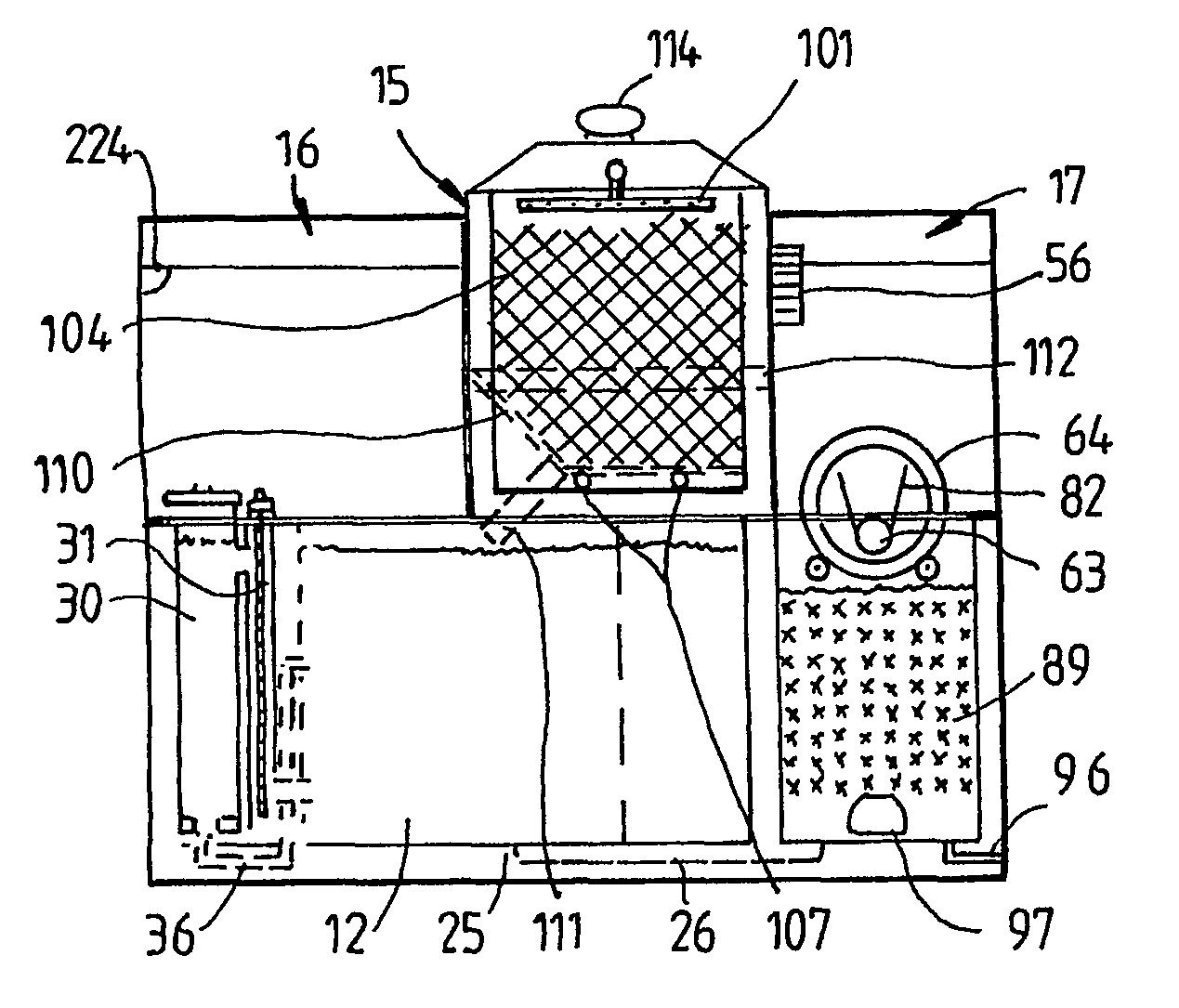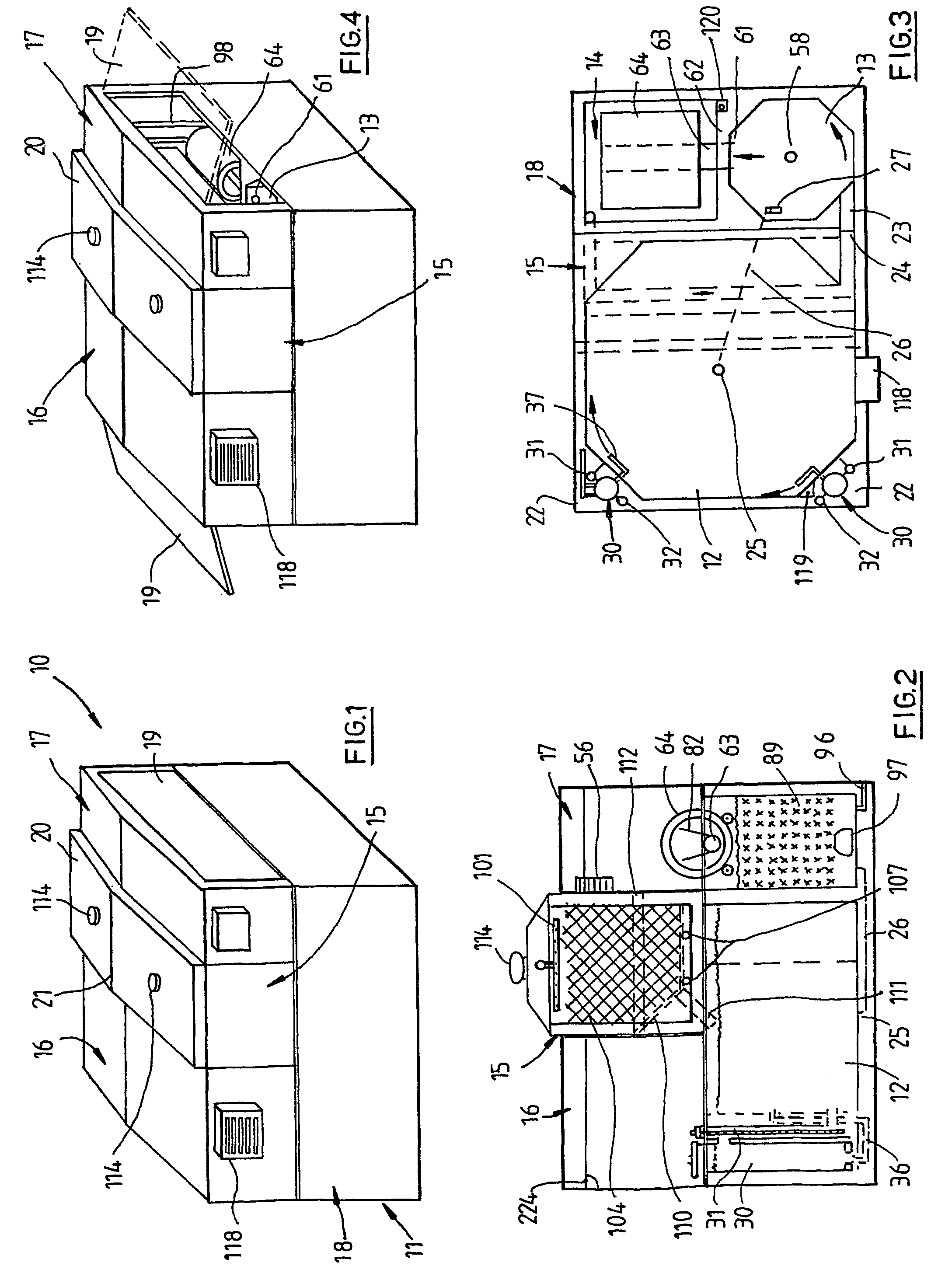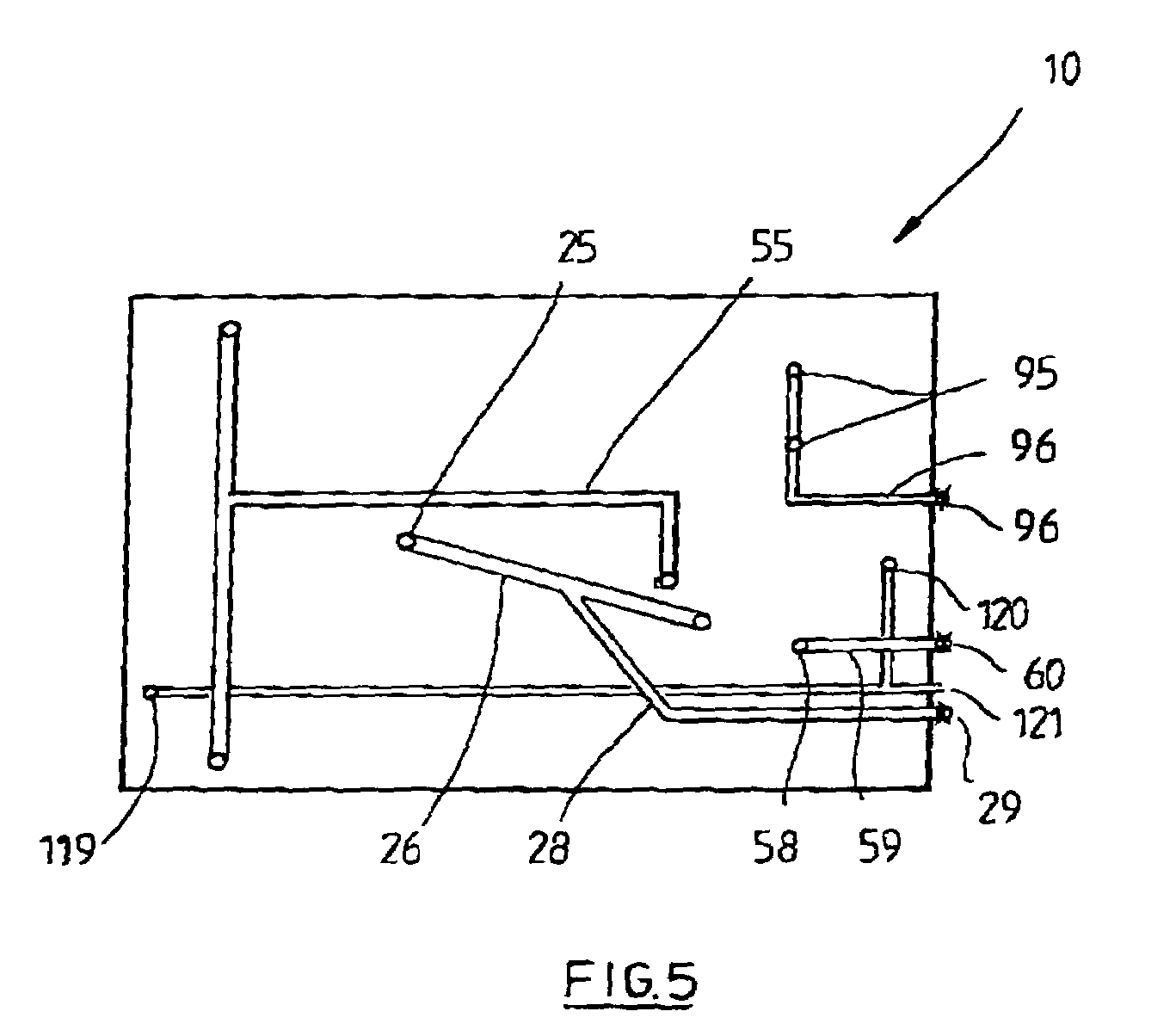Aquaculture system
a technology for aquaculture and systems, applied in the field of aquaculture systems, can solve the problems of ponds becoming polluted, destroying stock, and almost impossible cleaning of ponds
- Summary
- Abstract
- Description
- Claims
- Application Information
AI Technical Summary
Benefits of technology
Problems solved by technology
Method used
Image
Examples
Embodiment Construction
[0061]Referring to the drawings and firstly to FIGS. 1 to 4, there is illustrated an aquaculture system 10 in accordance with an embodiment of the invention in the form of a modular building 11 comprising and defining a main water chamber 12 for holding fish or marine invertebrates, a swirl chamber 13 which serves as a primary filter and a biological filter / drum or screen filter chamber 14 of a secondary filter. The chambers 12, 13 and 14 have their bases at substantially the same level; however the water level in each chamber is controlled such that the level in chamber 14 is less than the level in chamber 13 and the level in chamber 13 is less than the level in chamber 12. This then allows flow of water from the main chamber 12 to the swirl chamber 13 and then to the chamber 14 under the influence of gravity without pumping. The building module 11 also is defined by a biological filter tank 15 which is elevated and located above the main chamber 12. Opposite end integral hip roof ...
PUM
| Property | Measurement | Unit |
|---|---|---|
| temperature | aaaaa | aaaaa |
| mouldable | aaaaa | aaaaa |
| rotation | aaaaa | aaaaa |
Abstract
Description
Claims
Application Information
 Login to View More
Login to View More - R&D
- Intellectual Property
- Life Sciences
- Materials
- Tech Scout
- Unparalleled Data Quality
- Higher Quality Content
- 60% Fewer Hallucinations
Browse by: Latest US Patents, China's latest patents, Technical Efficacy Thesaurus, Application Domain, Technology Topic, Popular Technical Reports.
© 2025 PatSnap. All rights reserved.Legal|Privacy policy|Modern Slavery Act Transparency Statement|Sitemap|About US| Contact US: help@patsnap.com



